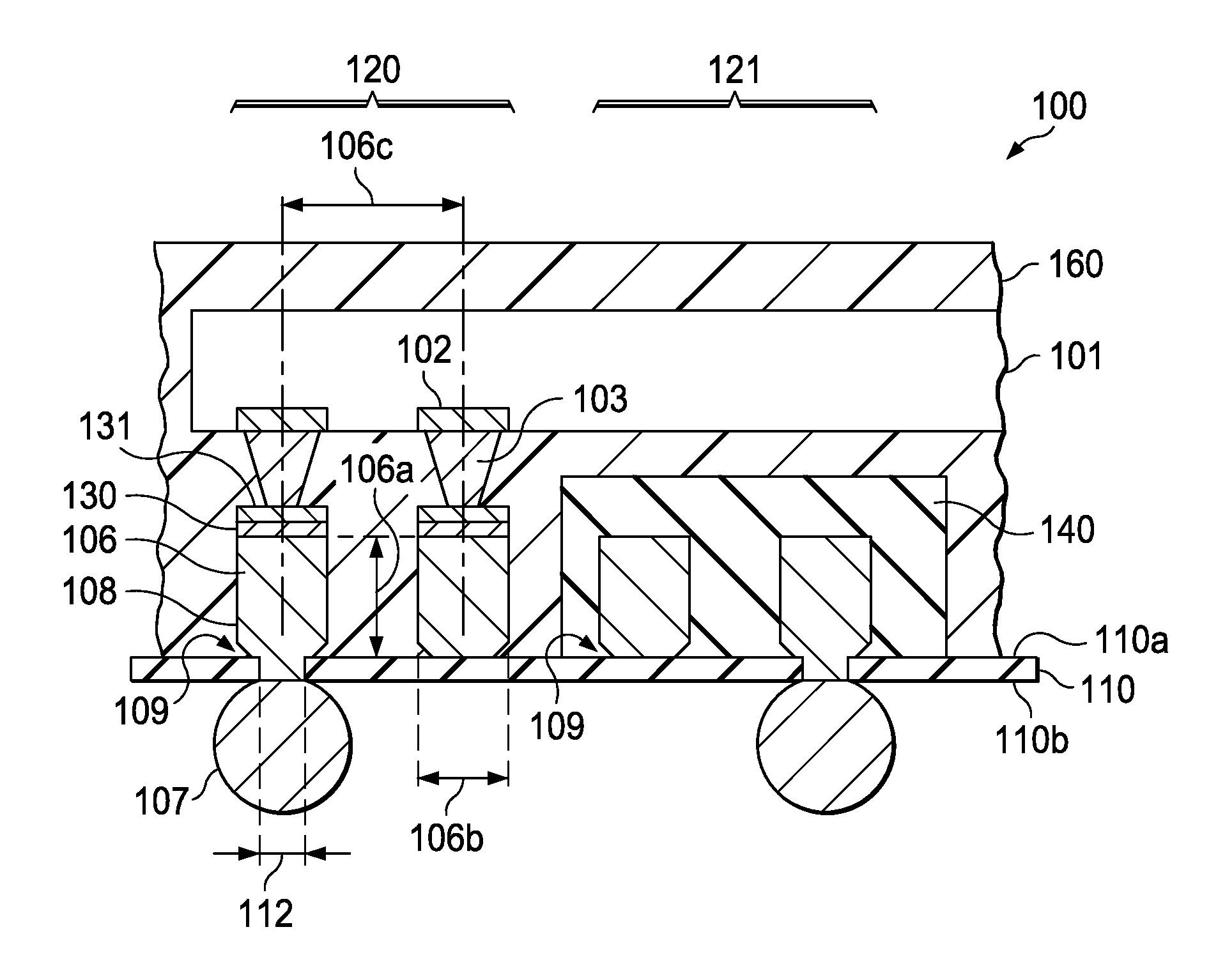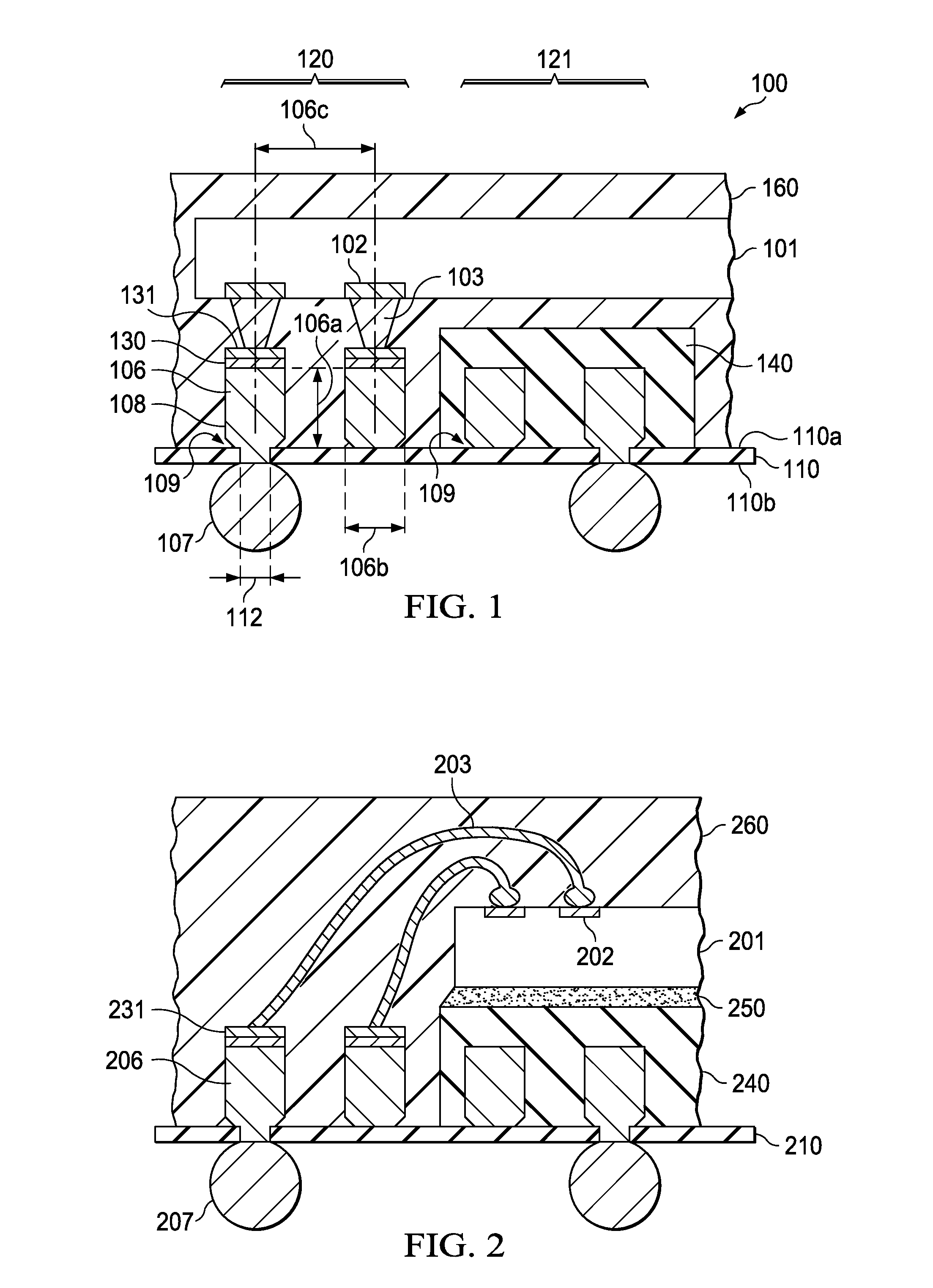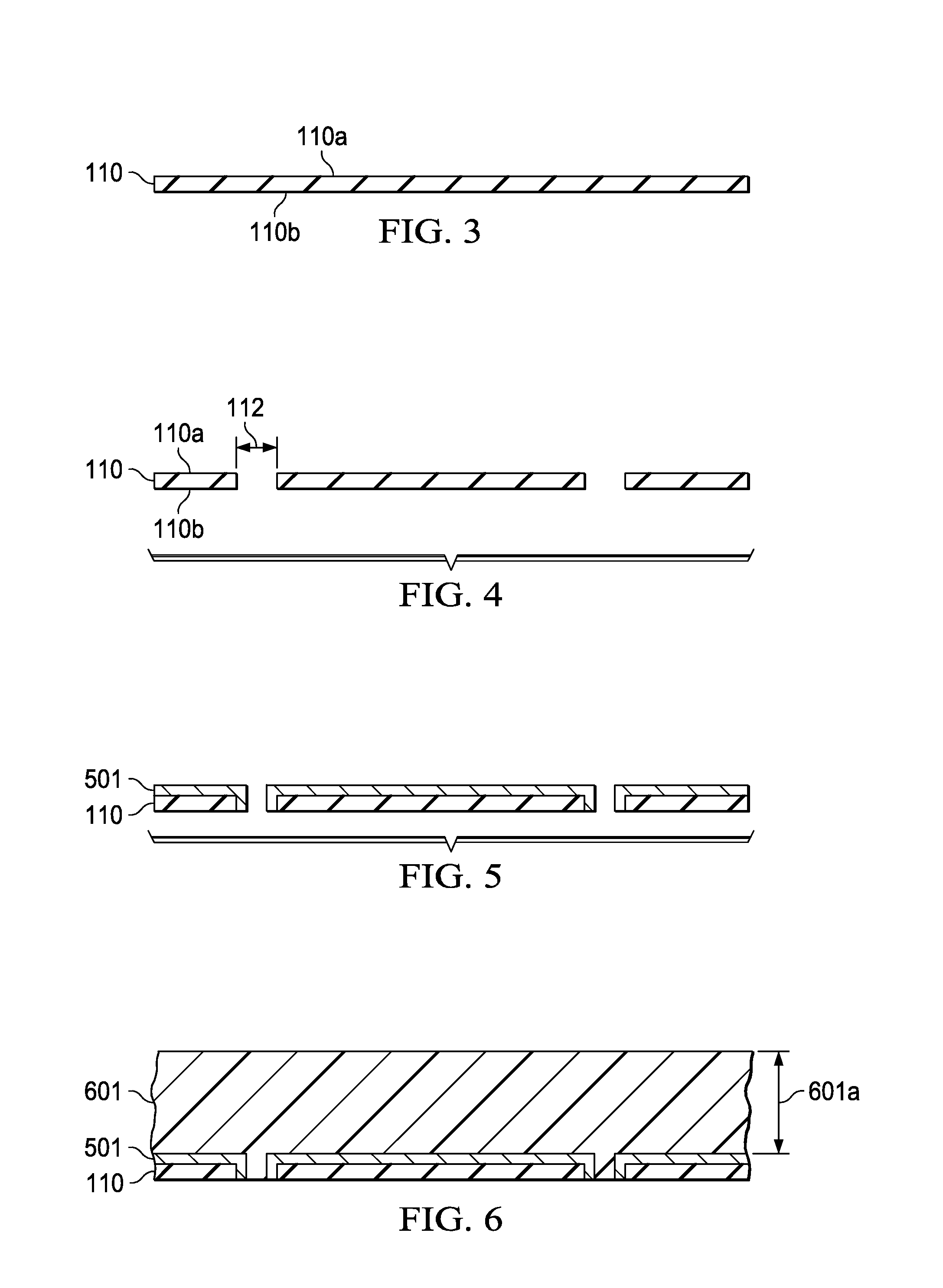Semiconductor Package Having Buss-Less Substrate
a technology of semiconductors and substrates, applied in resist details, non-metallic protective coating applications, patterning and lithography, etc., can solve the problems of limiting the number of signal traces in advanced bga devices, unable to place signal traces, and low so as to avoid plating the sidewall of the trace, keep the electrical resistance and trace fatigue low, and enhance the adhesion to plastic encapsulation compounds
- Summary
- Abstract
- Description
- Claims
- Application Information
AI Technical Summary
Benefits of technology
Problems solved by technology
Method used
Image
Examples
Embodiment Construction
[0034]FIGS. 1 and 2 illustrate cross sections of portions of exemplary BGA devices, which include embodiments of the invention. In FIG. 1, the device, generally designated 100, has chip 101 with terminals 102, onto which metallic studs 103 are affixed as chip contacts. Studs 103 are preferably made of gold; alternatively, studs 103 may be made of copper or a copper alloy. While studs 103 are schematically depicted as a truncated cones, their actual shapes may be more complex.
[0035]FIG. 1 depicts a portion of the substrate, onto which chip 101 is assembled. The substrate includes the insulating tape 110 with first surface 110a and second surface 110b. Insulating tape 110 is preferably a sheet of a polyimide compound with a thickness ranging from about 40 to 80 μm. The through-holes with diameter 112 extend through the substrate base from the first surface 110a to the second surface 110b. Through-hole diameter 112 is preferably in the range from 50 to 120 μm. As FIG. 1 shows, the thro...
PUM
| Property | Measurement | Unit |
|---|---|---|
| thickness | aaaaa | aaaaa |
| thickness | aaaaa | aaaaa |
| thickness | aaaaa | aaaaa |
Abstract
Description
Claims
Application Information
 Login to View More
Login to View More - R&D
- Intellectual Property
- Life Sciences
- Materials
- Tech Scout
- Unparalleled Data Quality
- Higher Quality Content
- 60% Fewer Hallucinations
Browse by: Latest US Patents, China's latest patents, Technical Efficacy Thesaurus, Application Domain, Technology Topic, Popular Technical Reports.
© 2025 PatSnap. All rights reserved.Legal|Privacy policy|Modern Slavery Act Transparency Statement|Sitemap|About US| Contact US: help@patsnap.com



